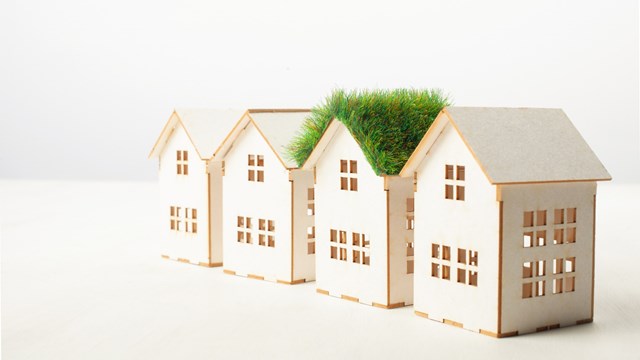For many people, one of the most attractive aspects of co-op or condo living is the fact that everything, from the windows to the elevators to the numbers on the apartment doors, looks great. Clean, bright, elegant and well-maintained. For residents, visitors, and prospective buyers alike, it is easy to see how much time and talent went into bringing aesthetic cohesion to these buildings and communities.
While design continuity and standards certainly contribute to the value and overall aesthetic of a community, the other – perhaps less popular – ingredient in this mix are the rules and regulations that establish each building’s look and feel and remain in place to ensure that nothing ever changes – at least not without a whole lot of approvals from committee members and fellow residents.
Co-ops, condos and associations establish and adhere to these rules for the very simple reason that they establish the look and feel of the building or community and – perhaps most importantly – help sustain and eventually increase the property value over time. Generally speaking, residents and shareholders are okay with sticking to their building or association’s aesthetic template. There are times, though, when a person wants something a little different, and may be tempted to see just how far those rules will bend.
Letters of the Law
For the most part, the rules guiding the look and feel of a co-op or condo community are meant to cover elements that are visible to all residents and visitors. “Most boards don’t try to influence anything within individual apartments,” says Lisa Smith, an attorney with the New York City-based firm of Smith Gambrell & Russell LLP. “Within the four walls of your apartment, if you wanted to paint everything purple, the co-op or condo board won’t say anything. Your neighbors might comment, but it’s your space.”
That said, Frank Lombardi, a principal with Goodman, Shapiro & Lombardi LLC, a law firm with offices in Massachusetts, New Hampshire and Rhode Island, notes that, should something inside an owner’s unit be deemed dangerous, then the board has leverage to crack down. “If there are hazardous materials, like anything that may spark a fire, that would definitely be a problem,” he says.
But it’s when people step outside their front doors that the board really asserts its authority. That purple interior is fine, “As long as the outside is consistent with the rest of the building,” Smith says – but points out that ‘outside’ can sometimes be interpreted to include elements such as window treatments that, while physically inside an individual unit, might face out onto the street and be visible to passers-by.
In a condo or HOA, “It’s the association’s property,” says Lombardi. “The unit owner doesn’t own the outside of their unit unless the documents say so, and even if they did, the board has a right to regulate the aesthetics of a condominium – both to keep it consistent with what the developer originally envisioned and what the boards have historically allowed. You can’t just paint your door pink when everyone else has a green door. The board has the right to have consistent doors that are green. This is what you bought into; if you don’t like it, move.”
Roofs may also cause consternation. Regulations might be on the books to ensure that the same materials, in the same colors, are used on all roofs within the development. HVAC sleeves on rooftop cooling systems that are visible from the ground might also fall under certain requirements in terms of color, shape, or size. Inside co-op and condo buildings, front door decorations facing onto common hallways also can cause contention among neighbors.
According to attorney Charles VanderVennet of the Law Offices of Charles VanderVennet in Arlington Heights, Illinois, “Many of the architectural restrictions come about with single-family homeowner associations. They may have 50 lots in the development and the covenants say you can’t put in a basketball hoop, or change anything without board approval. Or the roofs all have to be the same. Or the door has to be painted a certain color, in nothing other than earth tones.”
Making the Rules
The majority of aesthetic and architectural rules and regulations are created when the co-op, condo or association is established. These requirements are all typically recorded in the bylaws, rules or covenants, and so shouldn’t come as a huge shock to someone purchasing an apartment or townhome in that community – provided that they read through the documents prior to closing on their unit, of course.
In addition, “Most condos have a section in their bylaws that establishes a standing committee to govern architectural control of the condo,” says attorney Dennis Estis, partner at Greenbaum Rowe Smith & Davis LLP, with offices in Woodbridge and Roseland, New Jersey as well as Manhattan.
The aesthetic rules are provisions that apply to the resident and to his or her home. The expectation is that if someone has purchased a unit or become a shareholder, then that person knows that there are rules that must be followed.
Estis cites the case of Courts of Beachgate v. Bird, which was decided in the Superior Court of New Jersey in 1988. The case revolved around whether or not the association could mandate the particular style of window allowed in the community after a unit owner had chosen and installed a different style without board permission or approval. The answer to the question was yes, the board does indeed get to control questions of architecture. According to Estis, “The judge basically said that when you buy a unit, you are entering into a contract, and you must comply. I often tell people, if you don’t want to be faced with that, don’t buy a condominium. There are rules, and you don’t get to just decide not to follow them.”
Although the majority of the rules and restrictions are laid out early in the life of a co-op, condo or homeowners association, rules can certainly evolve and grow over the years, taking into account new technologies or trends. “Sometimes there could be a reactive action after someone does something [that other residents or the board] don’t like,” says VanderVennet – like painting his or her condo door a garish color, for example. At that point, committee members may decide to enact a new rule regarding the color palette residents may choose from if and when they wish to repaint their doors.
However, VanderVennet cautions, “If it wasn’t prohibited at the time the person did it, it has to be allowed, because the rule did not yet exist.” From that point on, a rule could be made that no more doors can be painted in that manner, “But there has to be a note that says ‘Unit 4 can have an orange door.’ When that door peels and needs repair, though, then the owner will have to comply with the new rule.”
New rules can be added “as long as they don’t contradict the governing documents,” adds Estis. Old rules cannot be easily changed, because they usually require the amendment of the master deed or bylaws. In some communities, making those changes can take a vote of 50 percent of residents in good standing; in other buildings, it can be as high as 75 percent. “It’s so difficult to do,” says Estis. “Unless the issue has become a cause celebre, people don’t really try it.”
Bucking the System
What happens when a resident or shareholder – knowingly or otherwise – breaks an established architectural or aesthetic rule? As with so many other things, it depends in large part on how those rules were initially laid out.
The first step likely will be a notice of violation, says VanderVennet. “The association can’t impose a fine without giving notice of violation and providing opportunity for a hearing before the fine is imposed.” The letter may ask the resident to contact the board or management within a certain number of days, and indicate that if they do not respond, the board will then assume that they admit the infraction.
“The board will want to hear from the owner and witnesses,” says VanderVennet. “It’s not a judicial hearing, but there are some hallmarks of that. A decision will be made as to whether there was a violation and if so, what is the sanction?”
Those sanctions may be in the form of a one-time fine or a daily fine if, say, the infraction is something along the lines of firewood stacked on a balcony. “If it’s something large, like a tennis court or a basketball hoop, that could require going to court to take care of it,” says VanderVennet. Ideally, “You want to get in there early and stop something like that before it gets built.”
In almost all cases, litigation is the least attractive means of resolving an aesthetics-related issue. Fortunately, there may be an intermediate option available. In New Jersey, for example, “Either the unit owner or the association has the right to demand alternative dispute resolution (ADR),” says Estis. “Let’s say someone painted their door and didn’t get approval, and the association starts a lawsuit. The resident can request ADR and put the lawsuit on hold until the ADR is attempted.”
Sometimes, changes are made to a co-op or condo that may contradict a rule or regulation, but the shareholder or unit owner may have a reason for making that alteration that requires further examination by the board/management, and perhaps ultimately their support. For example, if a resident sustains an injury or faces a debilitating illness that requires the installation of a ramp or some other form of assistance, that change needs to happen regardless of the rules in place or the aesthetic impact it may have on the building exterior. “No one could comment on whether a ramp is aesthetically pleasing,” says Smith. In other words, “It doesn’t matter if it’s pretty or not. It’s something that’s overseen by the Americans with Disabilities Act (ADA).”
VanderVennet agrees. “If an owner or occupant establishes that they have a disability and can provide sufficient information—such as a note from their doctor—then the association must allow the modification to be made at the owner’s expense.”
Says Estis, “Whether it’s a ramp or service dog or parking spaces for a disability, in almost every instance, if there’s a statute that governs it, the statute overrides the association or condo rules.”
As with any issues that arise in a co-op or condo community, the key is communication. A lot of stress, angst and attorney fees can be avoided if a resident or shareholder confers with the board or managing agent before making a significant change to their unit or home that affects their neighbors.
Elizabeth Lent is a freelance writer and long-time contributor to New England Condominium.










Leave a Comment